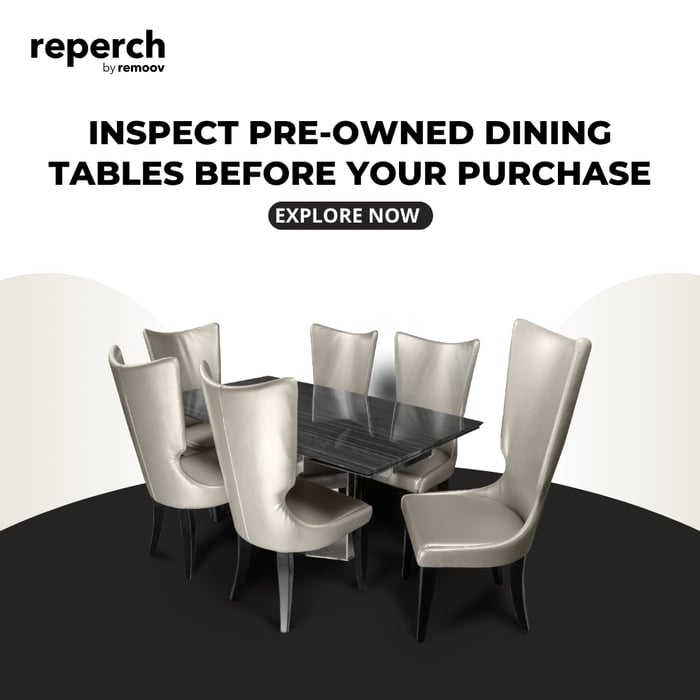A sofa is more than a place to sit. It is the spot where family movie nights happen, where friends gather, and where a quick afternoon nap feels like a mini‑vacation. For many households the sofa also represents one of the biggest furniture investments in the living room. Buying secondhand can cut that expense while keeping perfectly good pieces out of landfills. The trick is knowing how to judge comfort and condition before you hand over any money. This guide walks you through each step so your next pre‑owned sofa feels great on day one and still looks sharp years later.
1. Why a Secondhand Sofa Makes Sense
Lower cost without lower quality
Sturdy hardwood frames and high resilience foam often last well past their first owners. Buying used lets you tap into that quality at a fraction of retail pricing.Smaller environmental footprint
The United States discards more than twelve million tons of furniture each year. Extending the life of an existing sofa keeps raw materials in use and reduces landfill waste.Unique style options
Vintage velvet, midcentury shapes, designer fabrics—secondhand listings can feel like treasure hunts offering pieces no longer found in showrooms.
2. Start With the Frame
A sofa’s comfort begins with its skeleton. Flip up a corner skirt or feel underneath to find clues.
Solid wood over softwood or particleboard
Kiln‑dried hardwoods (oak, ash, beech) resist warping and cracking
Softwoods such as pine can twist after a few humid summers
Particleboard and plastic save weight but shorten the lifespan
Joinery tells a story
Dowels, wooden corner blocks, or metal brackets signal careful construction
Staples alone mean shortcuts
Try the “lift test”: raise one front leg about fifteen centimeters. The other front leg should rise almost immediately. If the frame twists before the second leg lifts the structure is weak.
3. Evaluate Springs and Support
Good support prevents sagging cushions and sore backs.
Eight‑way hand‑tied coils are premium but rare in modern stock
Sinuous steel springs (serpentine) are common and reliable when made from heavy‑gauge wire
Webbing only often feels nice brand new yet loses tension quickly
Press along the seat base. Springs should sit close together and offer firm resistance without squeaks.
4. Cushion Comfort: Foam, Fiber, and Feather
Foam density matters
High resilience (HR) polyurethane between 1.8 and 2.5 pounds per cubic foot balances softness and durability
Very soft foam feels inviting in the store but flattens within a year
Down blends add luxury
Down‑wrapped cores feel plush and hold shape when regularly fluffed. Plan for weekly maintenance if you choose this route.
Quick squeeze test
Remove a seat cushion, fold it like a taco, and release. Quality foam regains its shape in under ten seconds with no permanent crease.
5. Inspect Upholstery With a Critical Eye
Fabric condition: Scan for thinning spots, pulled threads, or fading on arm fronts and cushion tops.
Pattern alignment: Stripes should meet at seams; plaids should match at corners. Misaligned patterns reveal rushed workmanship.
Leather check: Quality hides feel supple, with consistent grain and minimal cracking. Fill light scratches with conditioner; deep cracks are permanent.
Odor is hard to remove. Smell the seating area and the underside. Smoke, mildew, or pet smells inside foam layers rarely disappear even with professional cleaning.
6. Measure Twice, Move Once
A great sofa is useless if it never reaches the living room.
Room footprint: The sofa should occupy about two‑thirds of the wall it sits against.
Pathway clearance: Measure hallways, stairwells, and elevator doors. Remember to account for banisters and overhead fixtures.
Door swings: Taking a door off its hinges can add critical centimeters during delivery.
Tip: Mark the floor with painter’s tape matching the sofa’s width and depth. Live with the outline for a day to confirm traffic flows smoothly.
7. Do the Comfort Test
Bring a friend and spend real time on the sofa.
Sit upright, lean back, and note lumbar support.
Slide to either end; no one should feel tilted off balance.
Lie down fully if naps are on the agenda. Your heels should not dangle past the arm.
Push sideways on the arms; they should feel rock solid.
If the seller seems impatient, that is a red flag. Comfort cannot be confirmed in thirty seconds.
8. Examine for Hidden Pests and Damage
Bed bugs and mold ride into homes silently. Use a flashlight to search seams, tufting, and the underside webbing for:
Black pin‑size spots or shed skins (bed bugs)
White powdery crystals near wooden joints (mold)
Fine sawdust piles (wood‑boring insects)
Check metal staples for rust and look for water lines on inner decking that could signal past floods.
9. Consider Age, Brand, and History
Ask direct questions:
How long has the owner had the sofa?
Has it lived in one room or moved through several apartments?
Any pets or smokers in the home?
What brand and model is it?
Well‑known manufacturers document frame materials and cushion specs. A quick online search can verify original prices and replacement part availability.
10. Plan for Transport and Cleaning
Even with local pickup you need strong straps, blankets, and at least two helpers. Protect corners with cardboard sleeves. Once home, steam‑clean fabric or treat leather with conditioner before first use.
For deeper sanitation hire a mobile upholstery cleaner. Prices in the Bay Area average between one hundred and one hundred fifty dollars for a full three‑seat sofa.
11. Where to Shop With Confidence
Reperch
Our platform curates secondhand sofas that pass a multi‑point inspection covering frame integrity, cushion resilience, and fabric condition. Detailed listings include dimensions, delivery options, and real photography shot in natural light. Local delivery across San Francisco and Phoenix means no surprise freight damage.
Other options
Estate sales for vintage frames
Consignment boutiques for lightly used designer pieces
Online classifieds, though proceed carefully and insist on in‑person inspection
12. Quick Buyer Checklist
Task | Complete? |
Confirm hardwood frame and solid joinery | □ |
Test seat support and spring tension | □ |
Squeeze cushions for bounce‑back | □ |
Inspect fabric for wear, stains, odors | □ |
Measure room, pathways, and doorways | □ |
Sit, lounge, and lean to test comfort | □ |
Check seams and underside for pests | □ |
Ask about age, brand, and maintenance | □ |
Plan cleaning and transport logistics | □ |
Fill every box before committing and the chances of post‑purchase regret drop sharply.
Conclusion
Buying a secondhand sofa is part detective work, part comfort test, and part logistical puzzle. Focus on the hidden structure first, then assess cushions and fabric, and finally confirm the piece fits both your room and your lifestyle. A few extra minutes spent lifting corners, measuring hallways, and sniffing for stray odors can extend the life of your sofa by years.
Reperch is here to make that process easier. Our curated selection saves the guesswork, and local delivery options remove the hardest part of furniture hunting. With the right know‑how and a careful checklist, your next sofa can arrive ready to host game nights, lazy Sundays, and every cozy moment in between all while reducing waste and respecting your budget.
Happy sofa hunting.








